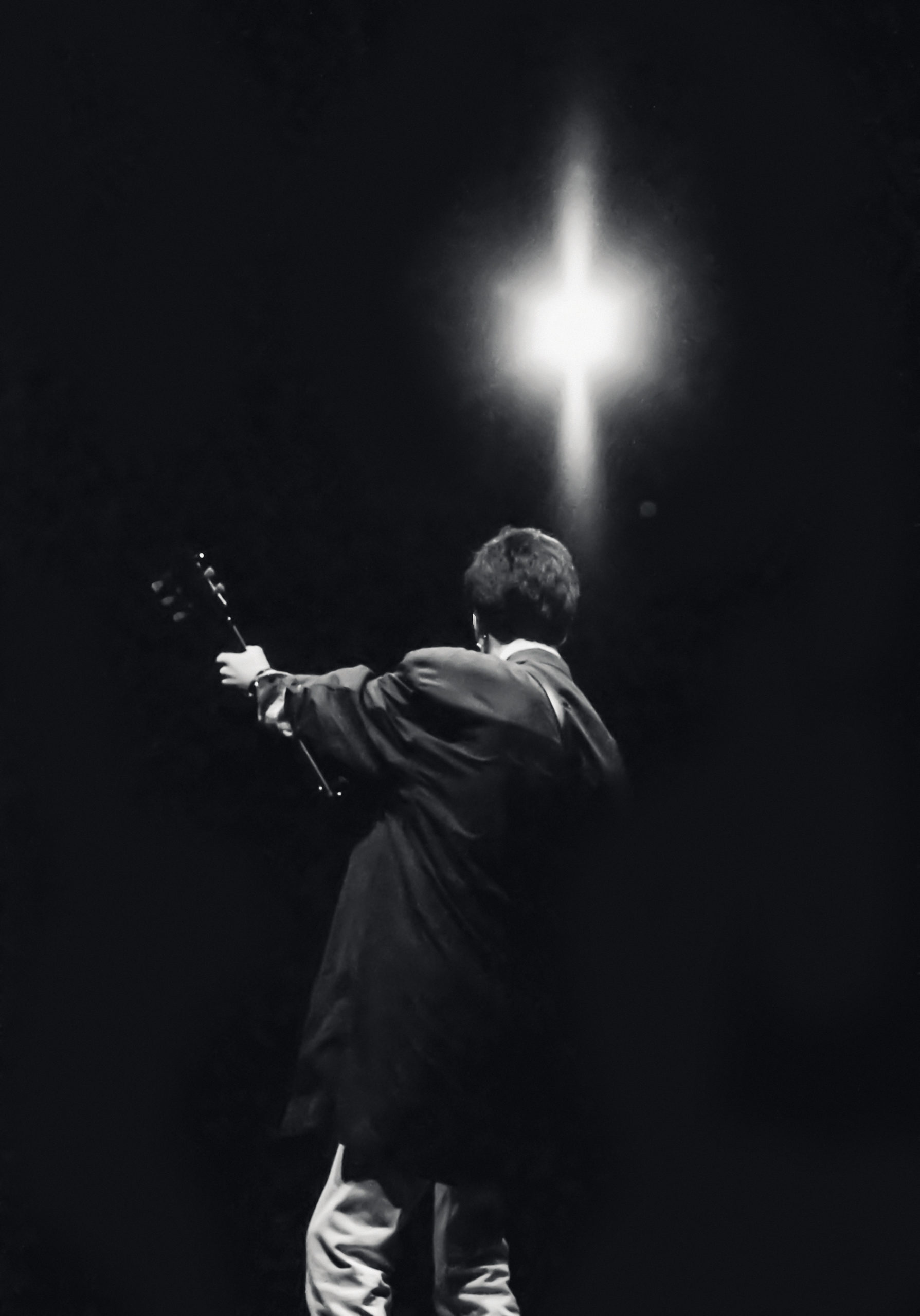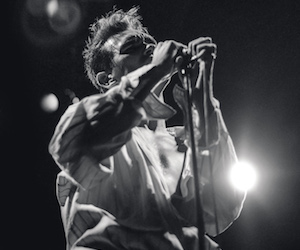 View Winners →
View Winners → Q&A with “The Smiths” Photo Book Photographer Nalinee Darmrong
Photographer Nalinee Darmrong didn’t expect to tour with The Smiths on the brink of graduating high school, and at the height of their short-lived career, no less. And now, on the precise date of The Smiths’ 30th anniversary of The Queen Is Dead, Darmrong releases a simple title, “The Smiths” (Rizolli 2016), a photography book filled with the photographer’s zoomed in experiences with band behind her camera while touring with them for Meat Is Murder and The Queen Is Dead (’85-’86). “I wanted to convey that closeness between artist and fan. The Smiths always seemed to explore the boundaries between the two, and it was great trying to capture these moments.” That, and nostalgic snapshots of ephemera (set lists, backstage passes, handcrafted promo materials and more), and candid beams by Morrissey, as well largely unpublished live shots of wound up live performances and you’ll channel a sense of invigoration, of innocence, of youth. At least that’s what happened to us when we sifted through the photo book, which happens to be authored by Andy Bell with contributions by Marc Spitz.
In Virginia, Darmrong took our call. Our constant topic of conversation? Serendipitous attraction.
LA CANVAS: From what I’ve read in your introduction to the book, the courses of action that took place for your journey with The Smiths were serendipitous. You going to their show in DC, that lead into playing duck-duck-goose until the morning hours while waiting outside their hotel for an autograph, approaching them at breakfast, and finally, while being pushed and shoved up by the crowd and punched down by the bouncers, you were pulled on stage by Morrissey at New York’s Beacon Theatre. It sounds like those scenes we see in the movies. The kind where fans swarm the rock stars. Was this true in your case?
NALINEE DARMRONG: It wasn’t exactly a particular moment, but now that you mention it, it did resemble a couple of scenes in a movie. It showed the aspect—in my mind—of getting to know a new community of fans for hours while reveling about the show and communicating commonalities about what we liked about the band. The excitement for the shows, the sun rising, and being so young was the feeling you can relate to now when watching Rock-N-Roll docs and films about pop music culture. There wasn’t really a swarm; more like a calm, quick jaunt into the cafe where they were. It was just really nice to be kind of a fly on the wall, but it made me quite happy to see everyone so excited as well. Going to New York just solidified that feeling for me: Morrissey saw me getting totally pummeled from both sides and literally saved me that night. All this laid the premise behind my documentation. I didn’t know it at the time, but it was stemming from the energy of seeing everyone else’s excitement and support.
LAC: It was 1985 and you were a seventeen-year-old just finishing high school when this journey began. Were you slanging’ 35mm prints for friends during recess? Was photography even your thing before documenting The Smiths?
ND: Absolutely not. I was definitely not that person. Here’s why the story is ironic: My dad was the photographer in the family, so I got it from him. I had no interest until around high school (I had only taken a couple of photography courses up to that point), and I had always wanted to be a musician. I took some music courses when I was younger (and when older) and I enjoyed it. I played a few recitals and shows, but photography always seemed more natural to me. I’d sneak out to shows and I would get a few candid shots of bands playing at venues like the 9:30 Club in D.C., but nothing like what I did with The Smiths. So I definitely have to thank my parents for both indirectly influencing me creatively.
LAC: You were invited to The Smiths at the Beacon Theater with after parties at Danceteria, of course. Can you elaborate on how the invitation presented itself?
ND: When we met Johnny [Marr] and everyone in D.C., he put us on the list for the shows in NYC. After the show, everyone headed to Danceteria after the 2nd show. The club was great, and I remember a myriad of checkerboard floors, the whole spectrum of colors and multitudes of dancing feet. Madonna was performing upstairs! Talking to the band was pretty casual—they always made me and my friends feel welcome.
LAC: Was there a moment where you had a conversation with any of them that went something like, “OK, you’re gonna document us for the next year.” Or did they just enjoy you snapping photos of them?
ND: Everything was very organic; timing was everything. My good friend Tony got me the D.C. concert tickets for graduation, then another friend got me some for Philly, then Johnny got us the tix for NYC that were two nights. So by that time, they knew and felt comfortable with us. After the CA shows, the band mentioned they were going to Scotland. It didn’t take much discussion amongst us to start saving and planning for that trip. It’s funny, Johnny recently told me that back then, he thought photography was what I did for a living.
LAC: You had a let down while on tour with The Smiths in ’85, where you showcased your work to their then manager, Sophie Ridley—and Johnny and Moz, who approved their faves—so that your snapshots may be considered for the next tour programs. It never happened, and you never spoke up about it.
ND: It is what it is. If you believe in fate and destiny, then there it is, here and now. I’m pretty shy when it comes to my own creative pursuits, and that was part of the reason why I never went back to show them the photos again after new management came in. I moved on from it after a few years of thinking about it. I just thought to myself that I always had all the photos and negatives, so if it happens, then it will. I think it’s a better time now, where there is such a Smiths resurgence. Now, I can speak about my experiences in a more omniscient light. If I had done this book then, or even shortly after they broke up, my work probably would’ve been tossed in with all the buzz. I appreciate that this is the 30th anniversary of The Queen is Dead album, and everyone seems to be reminiscing and celebrating. It was just so incredible to have that much autonomy and freedom back then, AND that I’m here to tell the tale.
LAC: And you’re tale is now the book. How did it get produced?
ND: I was contributing photos for another project, and the editor of that book sent his assistants, Trina Calderon and Jeanette Sawyer, over to mine to look through my stuff. I had a small binder of images and memorabilia, and I meekly said to them, “Hey do you guys like The Smiths?” I had never shown that binder to anyone, and to my pleasant surprise, the assistants said that they wanted to talk to their boss about it. I talked to my now editor, Roger Gastman, and everything just unfolded organically from there.
LAC: And finally, the breakup. Any beans to spill?
ND: I was there, towards the end and all I can really say is that in retrospect, having been a musician since then and in a few bands, you just kind of know when you see people getting run down and needing a break. After a while it gets to you, and I definitely saw a little bit of that. I was both surprised and not surprised. Their career, which included the albums, singles, tours, press, and trips was pretty much a non-stop whirlwind in their brief band lifetime; By the end of the last U.S. tour I’m imagining that they were indeed, exhausted—I just didn’t realize that break would eventually lead to the band’s split after their subsequent last UK tour later that year in 1986.
*All images © Nalinee Darmrong, The Smiths, Rizzoli, 2016.










































































































